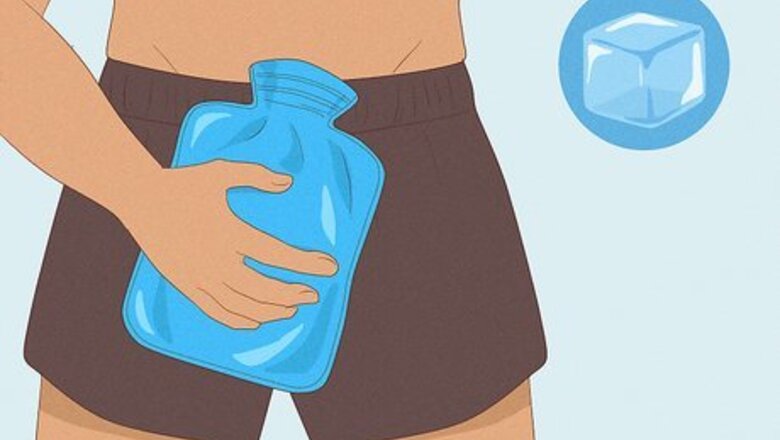
views
- Use an ice pack to relieve pain and reduce swelling in your testicles.
- Lie down on your back and place a rolled-up towel underneath your testicles to keep them comfortable.
- Wear supportive underwear or a jock strap to help relieve pain.
- Take antibiotics prescribed by your doctor to treat bacterial or sexual infections that cause pain and swelling in your testes.
Finding Fast Relief
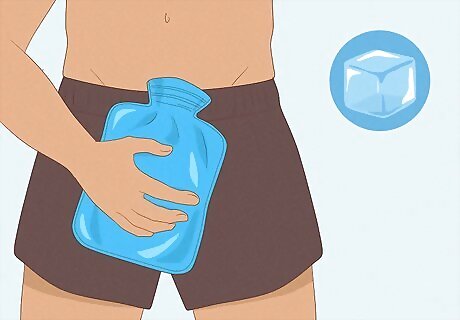
Apply an ice pack to the area. For sudden onset of swelling and pain, gently apply an ice pack or a bag of frozen vegetables to your testicles. If you don’t have an ice pack handy, make an ice pack at home using ice cubes and a plastic bag. If the cause of the swelling is serious, an ice pack can increase the amount of time the testicles can survive without a blood supply. Wrap the frozen ice or bag of vegetables in a dry cloth before applying to protect yourself from frostbite.
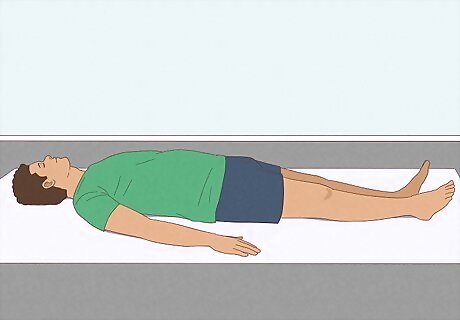
Lie down on your back. Until you can get professional help from a doctor, lying on your back and supporting the testes will relieve physical stress and discomfort. Settle into a position that feels comfortable and decreases your pain levels. Support your testicles by putting a rolled-up towel underneath them to help relieve pain.
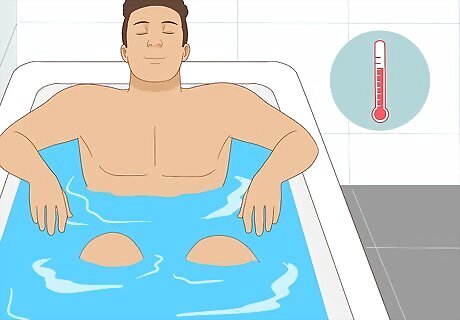
Take a warm bath. A warm bath can help alleviate some of the pain. Soak in a warm bath as needed to feel better and get some relief.
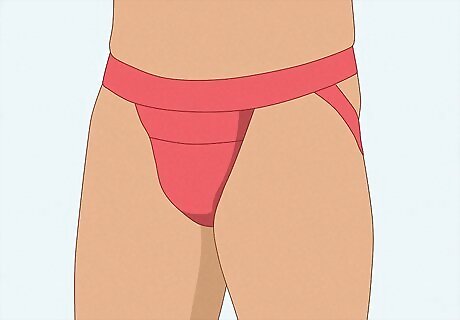
Wear a jock strap or supportive underwear. The extra support may help relieve some of your pain. If it's comfortable, wear a jock strap or a pair of supportive underwear until the pain and swelling go away.
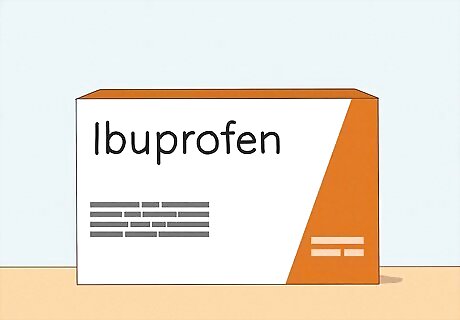
Take over-the-counter pain medications. Over-the-counter painkillers such as ibuprofen, paracetamol, or aspirin relieve pain and swelling. All of these medications work by inhibiting the production of chemicals called prostaglandins, which cause inflammation. The recommended dosage for each of these drugs is as follows: Ibuprofen (or similar generic drug), 200 – 400 mg tablets, with or just after food, up to 3 times a day Aspirin, 300 mg tablets up to 4 times a day Paracetamol, 500 mg tablets up to three times a day Do not mix these medications. Overdose can lead to serious side effects.
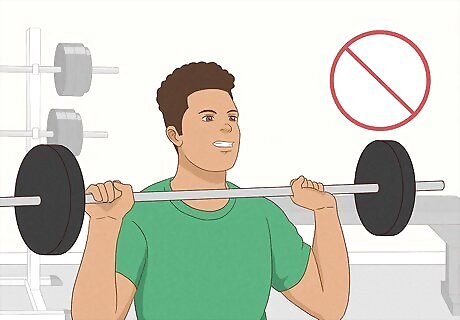
Rest and avoid strenuous activities. Allow time for the testicles to naturally heal by avoiding activities that could aggravate the pain and swelling. Avoid heavy lifting, running, and other vigorous exercises. If you can’t rest for long, be sure to wear supportive underwear to help relieve pain.
Causes of Painful or Swollen Testicles
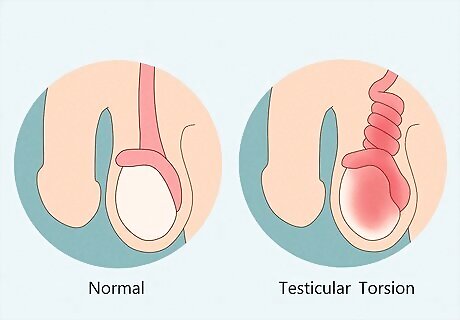
Trauma Testicular pain from trauma, called testicular torsion, includes pain in the testicles and of the epididymis, which is the tube that runs on the underside of the testicles. If you have experienced any testicular trauma at all, especially testicular torsion caused by a twisting of the testicles, have it looked at by a professional, because it may be a testicle-threatening problem. Your doctor may check your Cremasteric reflex, which is absent in cases of trauma. They'll slide a reflex hammer along the inner thigh, which will cause the testicle to rise up protectively into the scrotal sac in healthy testicles. Testicular torsion usually starts as an abrupt pain.
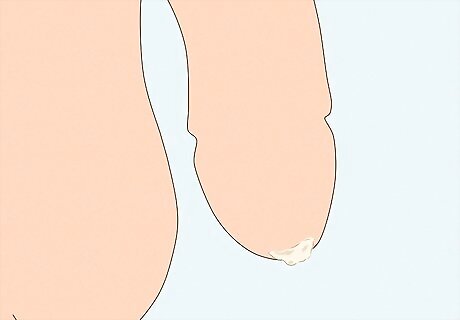
Infection Infectious causes of testicular pain include bacterial infection of the testicles and epididymis. This is due to bacteria that make their way up from the rectum, usually in men older than 35 and younger than 14. For young men between 15 and 35, the most common reason for infections of the testicles are sexually transmitted bacteria, such as chlamydia and gonorrhea. Your doctor may check to see if elevating the testicles will ease your pain, which is referred to as Prehn’s sign. Look for signs of chlamydia and recognize signs of gonorrhea like painful urination or discharge from the penis. Treatment of the infection will help with pain relief and combat any worsening of the infection and potential sepsis. The Cremasteric reflex will still occur with pain due to infections.
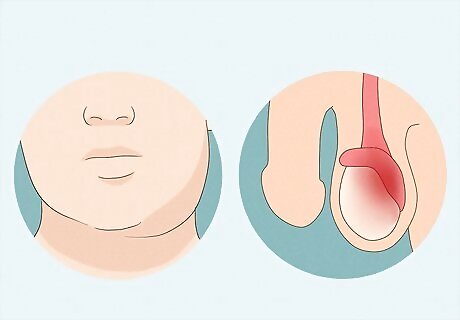
Orchitis Orchitis is due to viral infection, which causes acute pain and swelling in the testicle. Orchitis occurs due to mumps orchitis, a viral infection that can also cause the mumps. Approximately 20 to 30% of kids with mumps will get mumps orchitis. It usually begins 1 week after the onset of parotitis, which is the swelling of the parotid glands beneath the jaw. There is no treatment for viral mumps orchitis, and it may cause infertility. The only way to help is with supportive care, such as pain medications and ice packs.
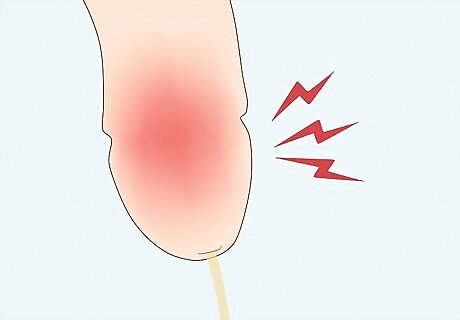
Sexually transmitted infections (STIs) Look for symptoms of STIs like pain in the testicles and pain while urinating. The onset of the symptoms is gradual and can take weeks. You may also experience vomiting, nausea, or abdominal pain. You will have a normal Cremasteric reflex. An ultrasound will show increased vascularity, pockets of infection, or abscess formations. You may also suffer from other symptoms, such as discharge or blood in the urine.
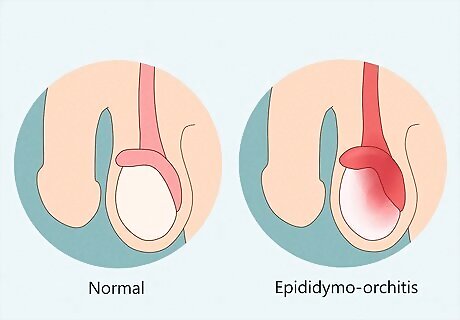
Epididymo-orchitis The pain caused by this bacterial infection develops quickly, over a day or so. Your epididymis and testicles will swell rapidly and become enlarged, red, tender, and painful. You may also have a different infection, such as a urinary tract infection or urethral infection.
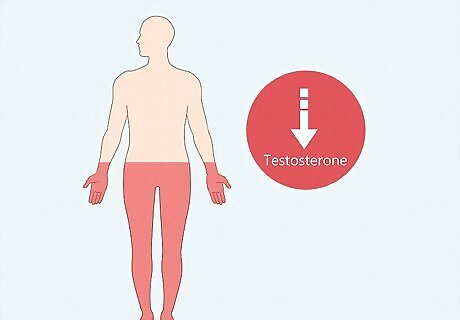
Hypogonadism In males, hypogonadism happens when the body doesn’t produce enough testosterone or sperm. You can be born with hypogonadism, or it can happen later in life because of an injury. Depending on when it develops, it can cause painful, swollen genitals, along with erectile dysfunction and infertility. Hypogonadism can also be caused by pituitary disorders, inflammatory diseases, and some medications.
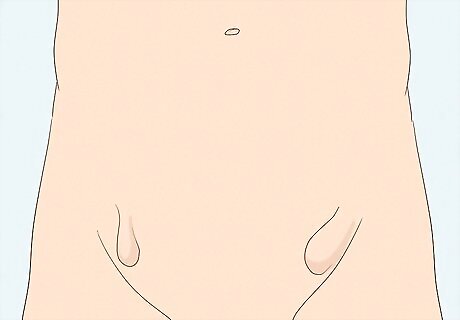
Hernia A hernia happens when the tissue from one part of the body bulges through a muscle into a different part of your body. Inguinal hernias are very common, and they happen when abdominal tissue bulges through your lower abdomen wall and into the groin. This can cause pain and swelling in the testicles. Hernias are very common, especially if you are assigned male at birth (AMAB). They typically happen because of strenuous activity or an injury.
Treating Common Causes
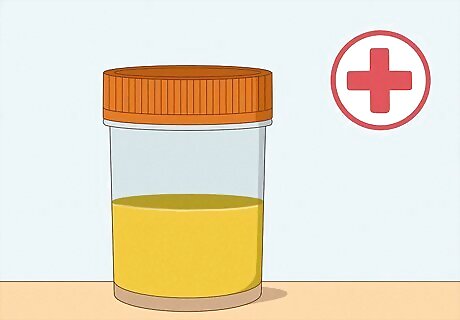
Have lab tests done to test for infection. Your doctor may test your urine for bacteria or look for symptoms of E coli. If you are a sexually active young man, your doctor may run a urine multiplex polymerase chain reaction (M-PCR), which will show if you have chlamydia or gonorrhea. An ultrasound is routinely performed for all scrotal pain and swelling, in order to check for more complicated problems. Your doctor will also check for a hydrocele, which is a collection of fluid around the testes. In this case, your doctor may drain the fluid in the office. However, since this procedure has a high rate of recurrence, they'll likely advise surgery if the hydrocele is causing you a lot of pain.
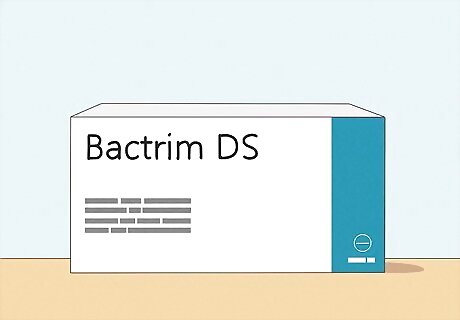
Take antibiotics for bacterial infections. Men of any age can suffer from infections that cause testicle pain, which can be caused by E. Coli or other bacteria. For older men, benign enlarged prostates can play a major role in developing these infections. The bacteria accumulates when the enlarged prostate prevents the bladder from draining properly. Because of this, E.coli or other gastrointestinal bacterial can back up and cause infection. Medical treatment for this includes Bactrim DS or a quinolone antibiotic. The course of treatment is around 10 days, unless the prostate is involved, which may prolong treatment. You can reduce pain with Tylenol, Motrin, or even stronger narcotic pain medication for the first few days.
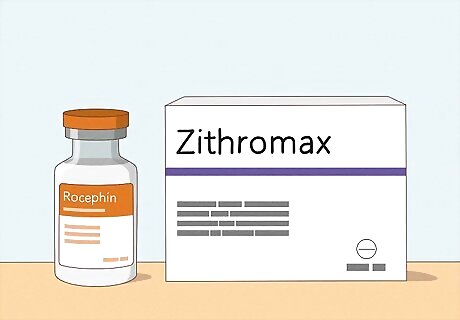
Treat sexually transmitted infections with antibiotics. Your doctor may prescribe Rocephin followed by a course of Zithromax or doxycycline. Improvement in pain should begin in 24 to 48 hours. Ice packs as well as testicular elevation can bring relief while you wait for the antibiotics to work. You can also take over-the-counter pain medications to help as well, especially during the first few days.
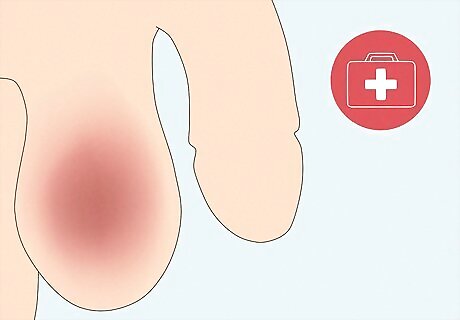
Treat infections quickly to avoid any long-term side effects. There are some common risk factors for both bacteria and viral infections that cause testicular pain. These risk factors include: Sexual activity Strenuous physical activity, such as frequent bicycle or motorcycle riding Prolonged sitting, such as frequent travel or truck driving History of prostate or urinary tract infections Benign enlarged prostate or prostate surgery, typical in older men Anatomic defects such as a posterior urethral meatus, which occur in prepubescent boys
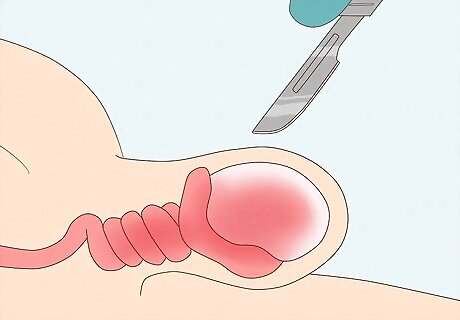
Get surgery for testicular trauma. Testicular trauma is caused by a twisted testicle not getting enough blood. This typically occurs after different kinds of trauma, such as slipping off of a bicycle and hitting the groin. Extreme testicular trauma can twist the spermatic cord, which calls for surgical intervention. This condition affects 3.8% of every 100,000 males under the age of 18 every year. Early recognition of a high-riding testicle and no Cremasteric reflex is sufficient to warrant surgical exploration. This can help prevent an orchiectomy, which is the surgical removal of the testicle. Even trauma that is not severe can cause swelling, tenderness, high fevers, and frequent and urgent need to urinate. The window from injury to surgery is approximately 4 to 8 hours. This will prevent too much damage to the spermatic cord, which has to be untwisted quickly to avoid removal. Despite this rush to take care of it, orchiectomy rates average 42%. However, a delay in diagnosis may result in orchiectomy and possibly infertility.

















Comments
0 comment